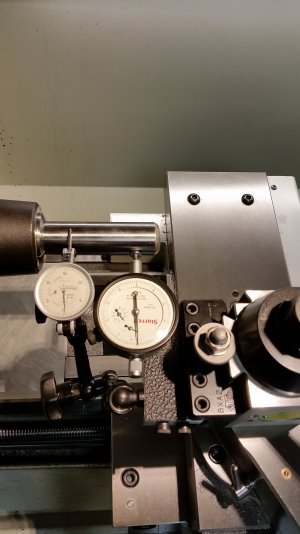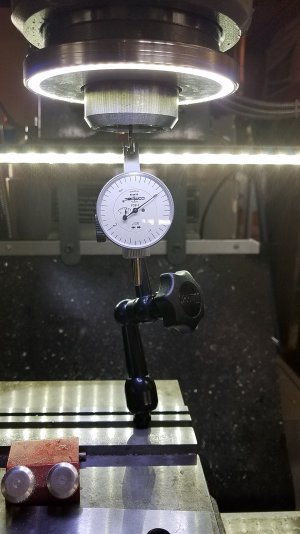You asked about measuring TIR, but if the unasked question is about truing up raw stock in the chuck (minimizing the TIR) then I've got a different answer.
Believe it or not (I'm honestly not trying to be a smart aleck), most of the time I'd answer "my eyes" or "my fingers".
It's relatively rare for me to chuck up anything UNLESS I'm planning to turn the OD. Unless I'm aligning my lathe, or re-chucking something because I screwed up the order-of-ops, or I'm trying to step over my tailstock to turn a taper, I'm unlikely to actually measure TIR.
Instead, I'll put a turning tool (or whatever) on the compound and move it close to the work near the tailstock end. Sometimes, for really rough work, I'll just rest my right hand on the top slide and point at the work, trying not to move my finger. Then I'll turn the chuck (by hand!) and knock the work around until the gap between the tool and the work is pretty even around the entire circumference. Then I'll move the turning tool a little closer and repeat. Finally, I'll spin the work at cutting speeds and look for any "ghosting" from runout. Usually my turning tool is there and ready to make the first cut.
It's surprisingly easy to get within 0.005" TIR this way (+/- 0.0025") which is usually good enough for turning nominally sized stock.
You can avoid a lot of interrupted cuts, wasted stock, and wasted time if you get in the habit of doing this, IMO.


